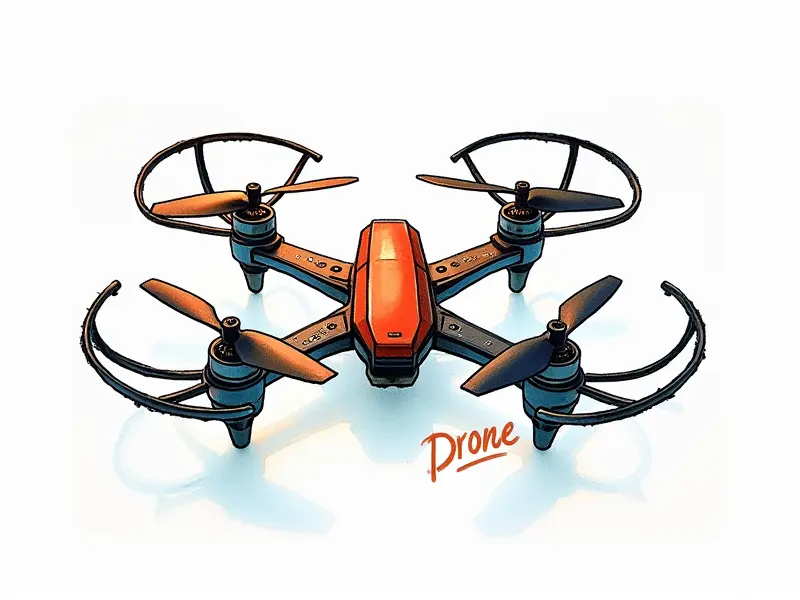How to set up racing PID tuning?

Mastering FPV Drone Racing PID Tuning
FPV drone racing is an exhilarating sport that requires precision and control. One of the key factors in achieving top performance is mastering the art of PID tuning. PID (Proportional-Integral-Derivative) tuning helps optimize your drone's flight dynamics, ensuring it responds quickly and accurately to your inputs.
Quick Guide to PID Tuning for RC Racers
Before diving into advanced techniques, let’s start with a quick guide on how to tune the PID settings of your FPV racing drone. Understanding the basics is crucial before moving onto more complex adjustments.
- Proportional (P): This setting controls how strongly the system reacts to the current error, making immediate corrections.
- Integral (I): The integral term accumulates past errors over time and adjusts the output accordingly, helping to eliminate steady-state error.
- Derivative (D): This setting predicts future errors based on current trends and makes adjustments in advance, enhancing stability during rapid maneuvers.
Optimize Your Drone's Performance with PID
To get the most out of your FPV racing drone, you need to fine-tune its PID settings. Proper tuning can significantly enhance flight performance, making it more responsive and stable.
- Start with Basic Settings: Begin by setting default values for P, I, and D based on manufacturer recommendations or community guidelines.
- Test in a Controlled Environment: Conduct initial tests indoors to observe how your drone responds under different conditions without the risk of crashing.
Fine-Tuning PID Settings for Top Speed
To achieve top speed and agility, you need to carefully adjust your PID settings. Here are some tips to help you optimize performance:
- Increase Proportional Gain (P): Boosting the P value increases responsiveness but can also lead to overshooting if set too high.
- Balancing Integral and Derivative Terms: Fine-tune I and D values to ensure smooth transitions and reduce oscillations during rapid maneuvers.
PID Tuning Tips for Competitive FPV Racing
In competitive racing, every millisecond counts. Here are some advanced tips to help you fine-tune your PID settings:
- Use Flight Data Analysis Tools: Analyze flight data to identify areas where performance can be improved.
- Experiment with Different Tuning Methods: Try various tuning techniques such as Ziegler-Nichols or Cohen-Coon methods for optimal results.
Achieving Perfect Stability: PID Tuning Guide
Stability is crucial in FPV racing. Here’s a step-by-step guide to achieving perfect stability:
- Start with Low P Values: Begin by setting low proportional gains and gradually increase until you achieve the desired responsiveness.
- Tune Integral Term Carefully: The I term should be adjusted slowly, as it can cause oscillations if set too high.
Maximize Flight Control with Advanced PID
To maximize flight control and performance, consider these advanced tuning strategies:
- Dynamic Tuning: Adjust PID settings based on real-time data during flights to optimize for varying conditions.
- Multivariable Control: Implement multivariable control techniques to manage multiple inputs and outputs simultaneously, enhancing overall stability.
Essential PID Setup for Ultimate Drone Racing
A well-tuned PID setup is essential for achieving the best performance in FPV racing. Follow these steps to set up your drone:
- Calibrate Sensors: Ensure all sensors are calibrated accurately before tuning.
- Test and Iterate: Continuously test and refine settings until you achieve the desired performance.
PID Tuning Tips for Fast and Stable Flight
To ensure fast and stable flight, focus on these key areas when tuning your PID settings:
- Balanced Proportional Gain: Find a balance between responsiveness and stability by adjusting the P term.
- Optimal Derivative Filter: Use a derivative filter to smooth out rapid changes, enhancing overall flight stability.
The Art of Fine-Tuning PID Settings
Fine-tuning PID settings is both an art and a science. Here are some advanced techniques to help you refine your tuning process:
- Use Simulation Tools: Simulate flight scenarios in software tools before testing on real drones.
- Collaborate with the Community: Share insights and learn from other racers through forums and social media groups.
Optimal PID Settings for Fast FPV Drones
To achieve optimal performance in fast FPV drones, consider these final tips:
- Focus on Quick Response Times: Prioritize quick response times by fine-tuning the P and D terms.
- Maintain Stability Under Stress: Ensure your drone remains stable during high-speed maneuvers by balancing all PID parameters.
Conclusion
Mastering PID tuning is crucial for achieving top performance in FPV racing. By following these guidelines and continuously refining your settings, you can optimize your drone’s flight dynamics and gain a competitive edge on the race track. Remember to test thoroughly, analyze data, and collaborate with other racers to achieve the best results.

